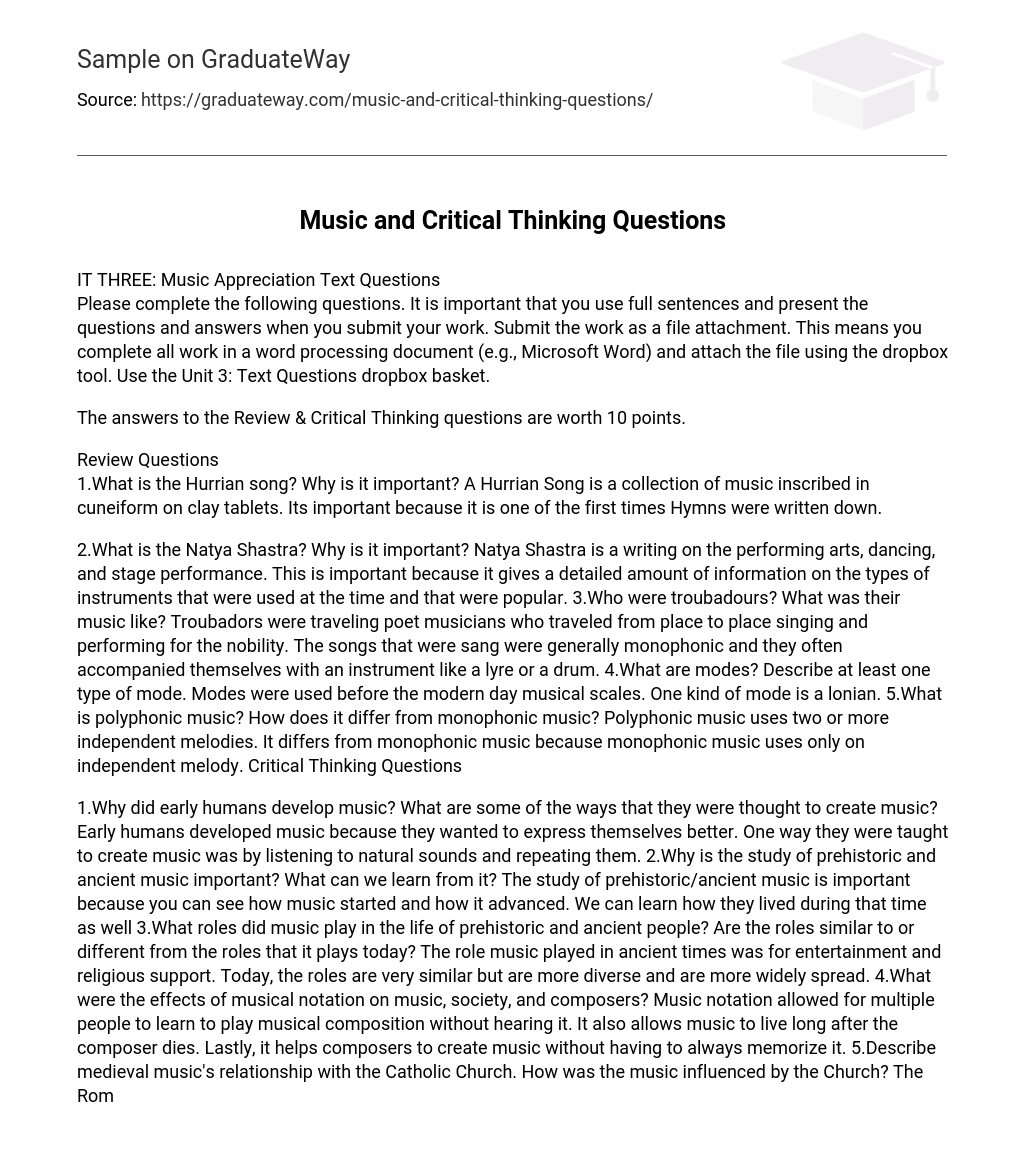IT THREE: Music Appreciation Text Questions
Please complete the following questions. It is important that you use full sentences and present the questions and answers when you submit your work. Submit the work as a file attachment. This means you complete all work in a word processing document (e.g., Microsoft Word) and attach the file using the dropbox tool. Use the Unit 3: Text Questions dropbox basket.
The answers to the Review & Critical Thinking questions are worth 10 points.
Review Questions
1.What is the Hurrian song? Why is it important? A Hurrian Song is a collection of music inscribed in cuneiform on clay tablets. Its important because it is one of the first times Hymns were written down.
2.What is the Natya Shastra? Why is it important? Natya Shastra is a writing on the performing arts, dancing, and stage performance. This is important because it gives a detailed amount of information on the types of instruments that were used at the time and that were popular. 3.Who were troubadours? What was their music like? Troubadors were traveling poet musicians who traveled from place to place singing and performing for the nobility. The songs that were sang were generally monophonic and they often accompanied themselves with an instrument like a lyre or a drum. 4.What are modes? Describe at least one type of mode. Modes were used before the modern day musical scales. One kind of mode is a lonian. 5.What is polyphonic music? How does it differ from monophonic music? Polyphonic music uses two or more independent melodies. It differs from monophonic music because monophonic music uses only on independent melody. Critical Thinking Questions
1.Why did early humans develop music? What are some of the ways that they were thought to create music? Early humans developed music because they wanted to express themselves better. One way they were taught to create music was by listening to natural sounds and repeating them. 2.Why is the study of prehistoric and ancient music important? What can we learn from it? The study of prehistoric/ancient music is important because you can see how music started and how it advanced. We can learn how they lived during that time as well 3.What roles did music play in the life of prehistoric and ancient people? Are the roles similar to or different from the roles that it plays today? The role music played in ancient times was for entertainment and religious support. Today, the roles are very similar but are more diverse and are more widely spread. 4.What were the effects of musical notation on music, society, and composers? Music notation allowed for multiple people to learn to play musical composition without hearing it. It also allows music to live long after the composer dies. Lastly, it helps composers to create music without having to always memorize it. 5.Describe medieval music’s relationship with the Catholic Church. How was the music influenced by the Church? The Roman Catholic Church was the primary patron second only to royalty for the arts in the middle ages. Some of the world’s greatest composers created musical masterpieces for the church. Discussion Questions
Please post questions and answers on the UNIT THREE discussion boards. Unless otherwise instructed, you should submit at least one full paragraph for each question. Each discussion assignment is worth 5 points.





